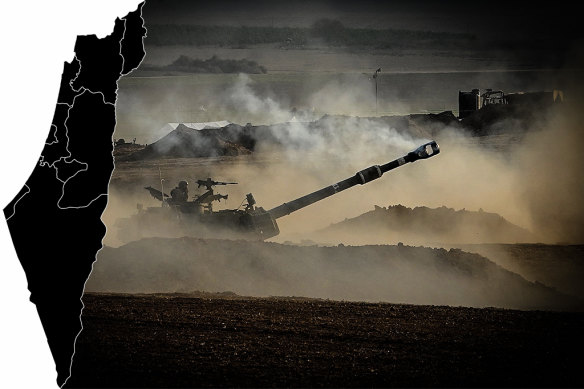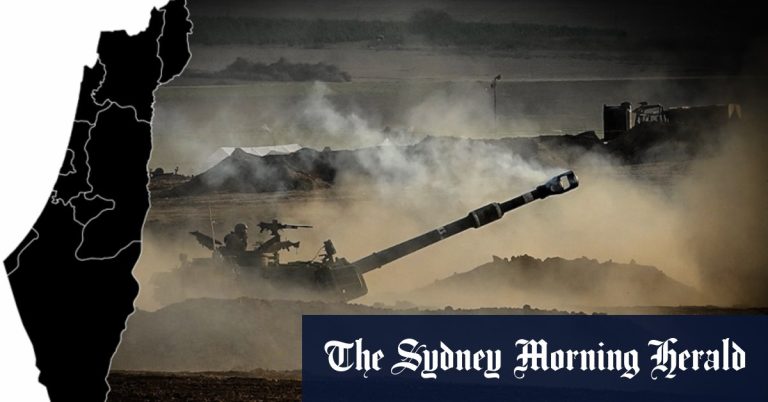In the wake of the disastrous war in Gaza and Hamas's shocking attack on Israel on October 7, there has been a new recognition that the historic status quo of “conflict management” in Israel is no longer an option.
Whatever its merits, and whatever its chances of previous success, the death of the Oslo peace process in 2000 left a huge void where there had once been a conceivable path to a more just future. But like any challenge to strong repression, in this case, Israel's repression of the Palestinians, just getting to the point where a viable alternative plan to a two-state solution can be seriously considered will require sufficient pressure.

There are many proposals to resolve the conflict between Israel and Hamas.credit: Photo: Kate Geraghty. Artwork: Marija Ercijovac
There is no shortage of proposals and visions for the future of the region – two states, one state, or a confederation of sorts – for what a just and lasting solution might look like in the region, where Israel has de facto sovereignty over more than seven million people. Palestinians and seven million Israelis.
Even before the events of October 7, a growing number of Israelis began to see the connection between apartheid and the disturbing authoritarianism of the Netanyahu government. On October 7, many Israelis came to a tragically different realization: that it is simply impossible to return to occupation, apartheid and siege, while enjoying the relative calm and safety they had come to expect. Combined with uncertainty about what comes next, recognizing the necessity of change creates opportunity.
In its current form, the two-state solution model is no longer viable. However, the main obstacle to the United States reviewing its position and support for Israel and the two-state solution remains: the vast resources of the pro-Israel lobby that supports US elected officials who remain blindly aligned with the Israeli government.
Instead, an alternative peace plan is needed. One such plan that my colleague Michael Omar Mann and I have designed as part of our work with Democracy for the Arab World Now (DAWN) is to ensure that both Israelis and Palestinians can democratically decide how they want to organize their rule, ending the Israeli occupation of Gaza and its racist rule over Palestine, and forming a transitional government charged with transforming the current system into a system based on the principles of equal rights.
We call our plan the Blueprint. The first and most important preliminary step to ending ongoing human rights violations is to create conditions in which all people – Israelis, Palestinians, Bedouins, Druze, Armenians and others – can freely decide whether territories should be formally divided into different states and merged. Into one state, or united in another form such as the cantons of Switzerland.
The blueprint provides a detailed three-year plan for how this initial phase of transformation will be implemented. This includes the establishment of a single civil legal system; Ending arbitrary military rule and emergency and anti-terrorism laws on the Palestinian territories; Allow all persons under Israeli rule to vote and enjoy equal rights, representation in an interim government and freedom of movement; And the establishment of a new Israeli and Palestinian security force with a new security doctrine.

